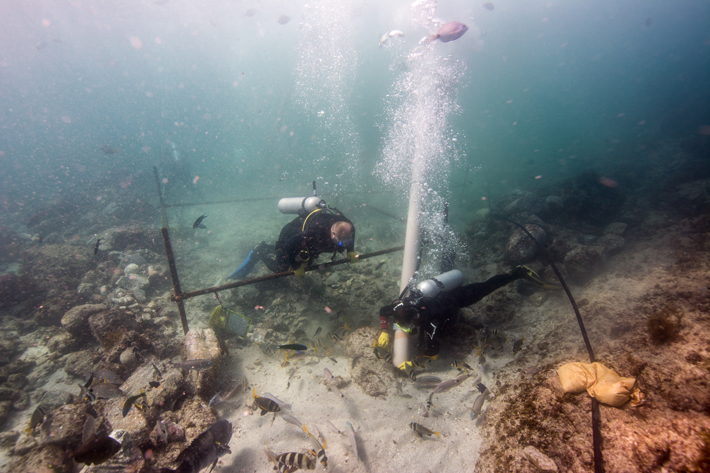by JASON URBANUS
 Divers excavate a wreck thought to be Esmeralda, Oman PHOTO/David Mearns
Divers excavate a wreck thought to be Esmeralda, Oman PHOTO/David Mearns
In 1498, Portuguese explorer Vasco da Gama created shock waves in Europe when he reached and returned from the Indian coast—and its valuable spices—by sailing all the way around Africa, a 24,000-mile journey. Da Gama found both success and hostility in the Indian Ocean, so when Portuguese king Manuel I dispatched him to the Indies again, in 1502, he went equipped with an armada of 20 ships and instructions not only to acquire spices, but also to harass and destroy the Muslim shipping industry that had monopolized the spice trade. One of these ships, Esmeralda, was captained by da Gama’s uncle, Vicente Sodré. Though the infamously brutal Sodré was directed by da Gama to patrol the Indian coast and protect Portuguese interests, he opted to sail toward the Arabian Peninsula in search of conquest and the rich plunder of Muslim ships. In 1503, Esmeralda and its crew, including Sodré, were lost in a storm off the coast of present-day Oman.
For five hundred years, Esmeralda remained a footnote to the Age of Discovery—until divers discovered its possible wreck site in 1998, on the island of Al Hallaniyah, 25 miles south of the Omani coast. Over the past three years, an archaeological project led by the Oman Ministry of Heritage and Culture and Blue Water Recoveries Ltd. has investigated the early sixteenth-century shipwreck. More than 2,800 artifacts have been recovered by archaeologists, including elements of the ship’s rigging, ceramics, coins, artillery, firearms, munitions, and trade goods. These objects are not only helping to confirm the ship’s identity, but are also providing valuable information about early Portuguese exploration. “As the earliest ‘Ship of Discovery’ ever to be found and excavated by archaeologists,” says project director David Mearns, “we knew that virtually every artifact recovered could provide new insights into how the Portuguese conducted navigation, trade, and naval warfare during this historically important period.”
Archaeology for more